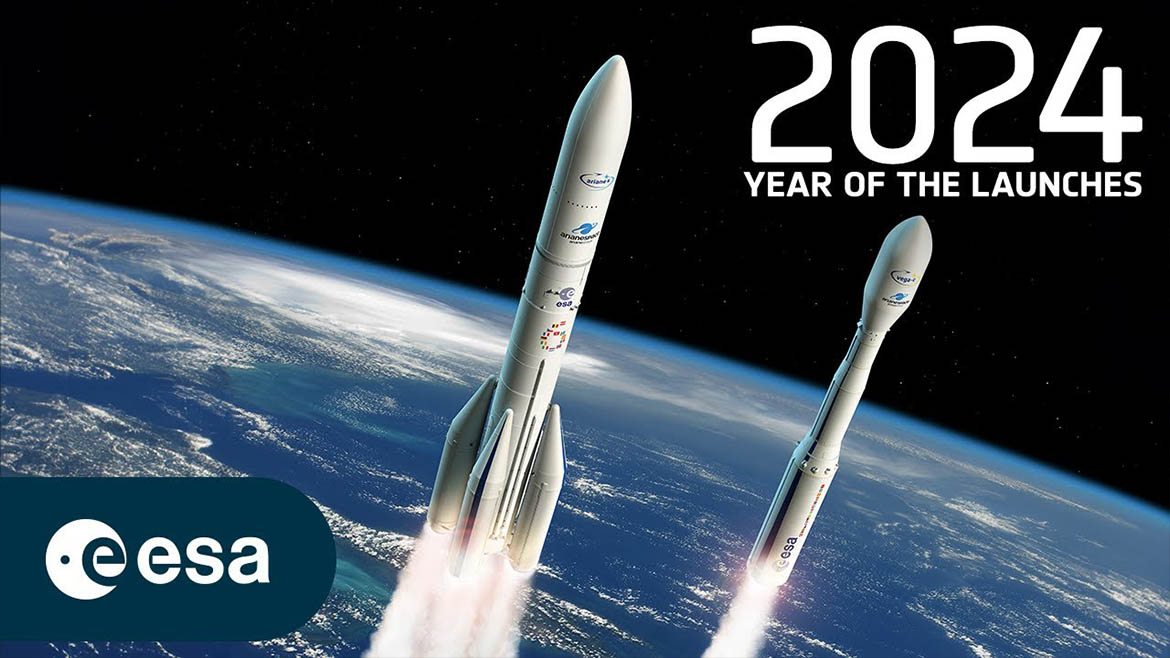2024: a year of beginnings
As we enter 2024, we would like to encourage you to join ESA in looking ahead and exploring what the next 12 months have in store for us.
Following the retirement of Ariane 5 in 2023, Europe’s next and most adaptable heavy-duty launcher, Ariane 6, will carry on the tradition of quality and dependability established by Ariane. Following an extended period of preparation and construction, Ariane 6 is set to make its inaugural voyage from Europe’s Spaceport in Kourou.
In 2024, we will witness the resumption of flights for Vega-C. Vega-C will continue to provide Europe with a cost-effective and lightweight launcher. The two initiatives ensure that Europe has independent access to space.
We also maintain international collaboration with NASA on the Artemis lunar programme. In the upcoming spring, the United States will get another European Service Module, ESM-3, for the third Artemis mission. It will be joined with its Orion capsule.
In 2024, Proba-3 is scheduled to be launched, marking the first mission focused on precision formation-flying. The Coronagraph and Occulter spacecraft will fly together to create a 144-meter coronagraph, which will investigate the sun’s corona at a closer distance to the solar rim than ever before.

In the early part of the year, the initial scientific information collected by our most recent space telescope, Euclid, will be disclosed. Euclid was created to investigate the makeup and development of dark matter and dark energy.
The Hera mission, scheduled for launch in 2024, is another thrilling endeavour. The goal of this mission is to travel to the binary asteroid systems of Dimorphos and Didymos to investigate the effects of the Dart mission’s impact.
In the field of Earth observation, multiple satellites are prepared for launch. These include the EarthCARE mission by ESA/JAXA, the Arctic Weather Satellite programme, and the Copernicus Sentinel-1C and Sentinel-2C satellites by the European Union.
In 2024, Galileo will experience more advancements. Two further first-generation satellites are scheduled to be launched in April, with two more planned for later in the year. These will enlarge the constellation and ensure Galileo’s best performance. At the same time, the initial hardware shipments will occur for the second iteration of the Galileo satellites.
The five astronauts selected in the 2022 astronaut class will complete their fundamental training this year and subsequently be prepared for mission assignments.
Swedish project astronaut Marcus Wandt does not have to wait. In January, he will be sent to the Space Station as a mission expert on the Axiom-3 commercial mission, just in time to meet up in space with his Danish colleague, ESA astronaut Andreas Mogensen, who is planned to come back to Earth after a six-month stay on the Space Station in February.
Stay updated about the latest technological developments and reviews by following TechTalk, and connect with us on Twitter, Facebook, Google News, and Instagram. For our newest video content, subscribe to our YouTube channel.
Read More: Samsung’s Galaxy M13 5G Receives Android 14 and One UI 6.0 Update





